
I recently upgraded my Motorola Droid to Samsung Galaxy Note. My delightful new toy comes with a lovely 8 MP camera. And no, I'm not just saying this to gloat. This blog will feature photos from the Galaxy Note's Camera. Though I may not be able to zoom, I found that I can control exposure settings. I welcome comments on the image quality. Please look carefully and let me know what you think.
On to the plant in question; this is a family heirloom of sorts. My Mom acquired it in 2001 from my Grandma's garden in Mumbai, as a cutting. I got my own cutting from Mom 3 yrs ago, so its not technically too old.
I didnt know much about it, and though its fairly popular in offices and as a house plant, never once had I seen it bloom. Until one Saturday afternoon while picking off dried leaves I was floored by a flower hidden among the large leaves. It was no small affair, this was a Goliath the size of my hand. The inevitable research follows.
The Plant
Philodendrons are a genus of several hundred plant species. They are a flowering plant. They are climbers native to tropical America. Philodendrons belong to the Araceae family. But they are not totally unknown to us, we all know many of its relatives. The Colocasia, the Caladium and the Anthuriums all belong to the Araceae family too. Not surprising then that they all have large leaves and similar shaped flowers.
So among hundreds of Philodendrons which is mine? I think its the Philodendron 'Golden Emerald' based on this blog by PlantsAreTheStrangestPeople. It looks just like mine. I did think I had the 'Moonlight' but its flower has a pink outer covering unlike mine which is pale green-yellow.
My plant in the pictures is sporting 2 large buds - see if you can spot them. The two new leaves also in the picture are rolled up neatly. They have a thin outer covering.
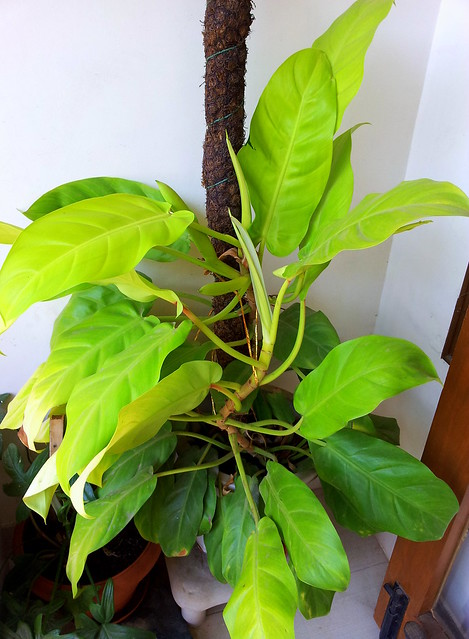
The thin outer coverings are called cataphylls. They cover the new leaves and as the leaf unfurls, the outer covering hangs down like a peel. It eventually dries up, turning brown and crispy and curls up at the base of the leaf. It can be seen clearly in this photo.
The flower ( technically its a inflorescence ) is composed of 2 parts - the Spathe (which is the outer hood like covering) and the Spadix ( the long finger like projection ). The Spathe in my case is a pale green-yellow stiff hood. The insides are brick colored towards the end. The Spadix is a plain white tube.
| The flowers open slowly, and over a day, the spadix gradually leans itself outside of the hood. It closes up again looking very similar to the original bud, just a little puffier. Since the first flower, my plant has been quite busy in this department, producing them at a rate of 2-3 a month. So, does it become a fruit? Sadly it doesn't seem to be the case. Philodendrons are pollinated by beetle species. |
We can safely assume that no beetles from South America are heading out to help my plant propagate, so how do we make more philodendrons?
Growing and Propagation
Stem cuttings grow readily and can even be kept in water for several days ( I do this while I wait for empty pots ). Wikipedia says the cutting must have at least 2 joints. I have just used large cuttings usually from accidentally broken off parts of the Parent plant.
It is ideal to grow it indoors at home or at an office. It doesnt require natural light. The leaves will turn pale if exposed to too much sunlight. It does well in shaded corners of balconies, which is where I keep mine. The thumb rule is bright light but not direct sunlight.
In my observation, the leaves are also getting progressively larger as the plant grows up. The leaves will droop if it needs more water. It seems to like the soil to be quite moist. I add used tea leaves to the planters.
It requires little care beyond that its leaves tend to get dusty every now and then and it needs to be wiped down with a damp cloth ( a time consuming job for large plants ).
Uses
The philodendron's uses are mostly decorative. Wiki tells us that some species are poisonous. So its best to avoid adding those leaves to any salads. :-)
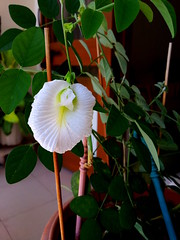 | Btw, I have acquired a White Butterfly pea. Here is a recent photo. I also have 2 other species of philodendron, the names of which I have yet to discover. I have also finally found out the names of 2 of my wierd plants. 1. Euphorbia tirucalli 2. Cissus quadrangularis ( my plant's leaves are shaped differently ) If you had a doubt ( I know I did) on whether the common MoneyPlant is a Philodendron - It is apparently not, going by this explanation. A post on these and more will follow as and when I learn more. |

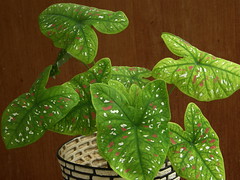
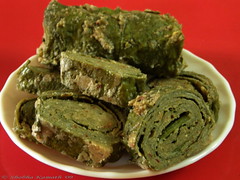
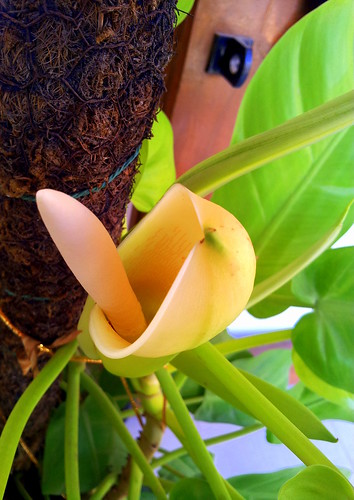
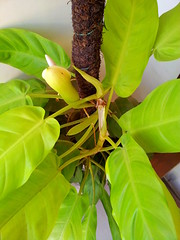





1 comments:
Mouth watering "Patra" (called in gajarati way ;)).. That reminds me, I have got frew dry one from my hometown :P.. As usual, botanical details are interesting
Post a Comment
Please do not post ADs here, they will not be published. All comments are moderated.